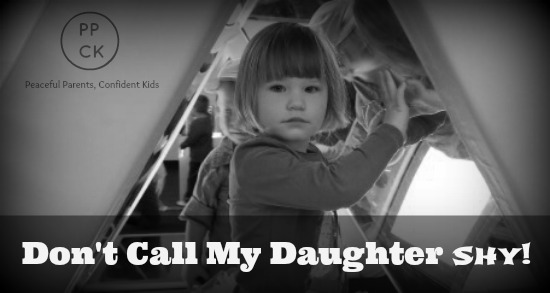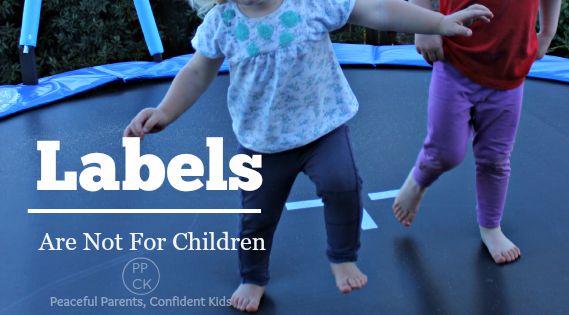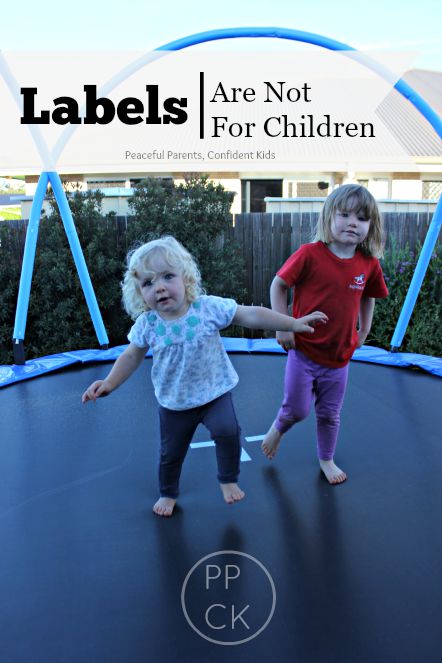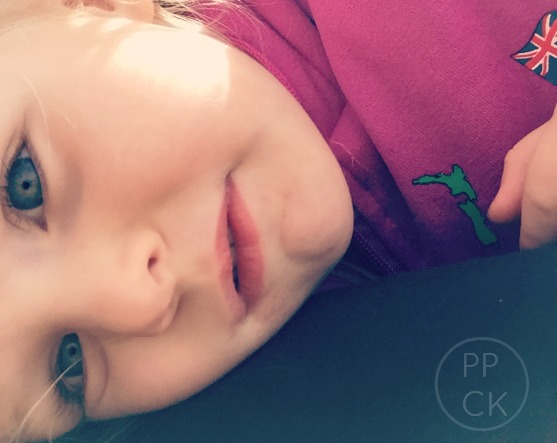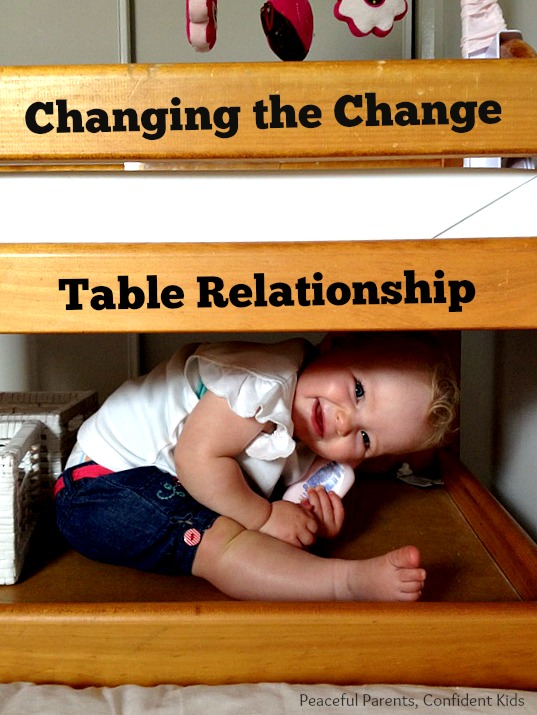One of my most favourite and rewarding RIE practises centres around the notion that, in play, children are entirely capable of achieving their own goals at their own pace often without the need for demonstration or guidance. My understanding and appreciation of this has developed over time and as I have withdrawn my desire to show the girls what to do with an activity, toy or task, I have witnessed a lovely spike in confidence and countless beaming smiles as they have engaged in play in the way they wish to, without the expectation to do it right!
Although I could probably write a novel of short stories describing examples of how letting my girls discover their own play style has produced inspiring results, I have chosen just a couple of recent examples to share with you.
A few weekends back, my husband and I took our girls (Lucy, 2.4 years and Penny, 1.3 years) to visit their Granny in Brisbane (our nearest capital city). Being from a smaller town, we love taking the girls to see the amazing sights a big city has to offer so it wasn’t long before we had packed our bags and headed off for an excursion to the City’s cultural playground which houses an art gallery, museum, Science Centre and the State Library amongst other things. There is far too much to take in on one day so we settled for just the museum and the State Library on this particular day. Of course the children LOVED the museum with all it’s beautiful animal exhibits and lovely interactive displays but it wasn’t until we got to the Library that I was truly able to see the benefits of letting the children discover their own play.
It just so happened that the Library at the time had a fantastic sound display for children consisting of musical instruments fashioned from ordinary household goods as well as a mini dance floor surrounded by curtains. Among the amazing contraptions the children were invited to interact with was a vacuum cleaner trumpet, a xylophone style instrument made from hanging spoons and forks, a thong-a-phone and a washboard table with drumsticks. The girls were overwhelmed with the choices and possibilities initially. The first thing they discovered was the dance floor. With its flashing lights and cubby like set up, it was always going to be a big attraction. Lucy headed straight onto it, grabbing the head phones from the rack and donning them before ditching them in favour of ‘chasing the lights’ on the floor.
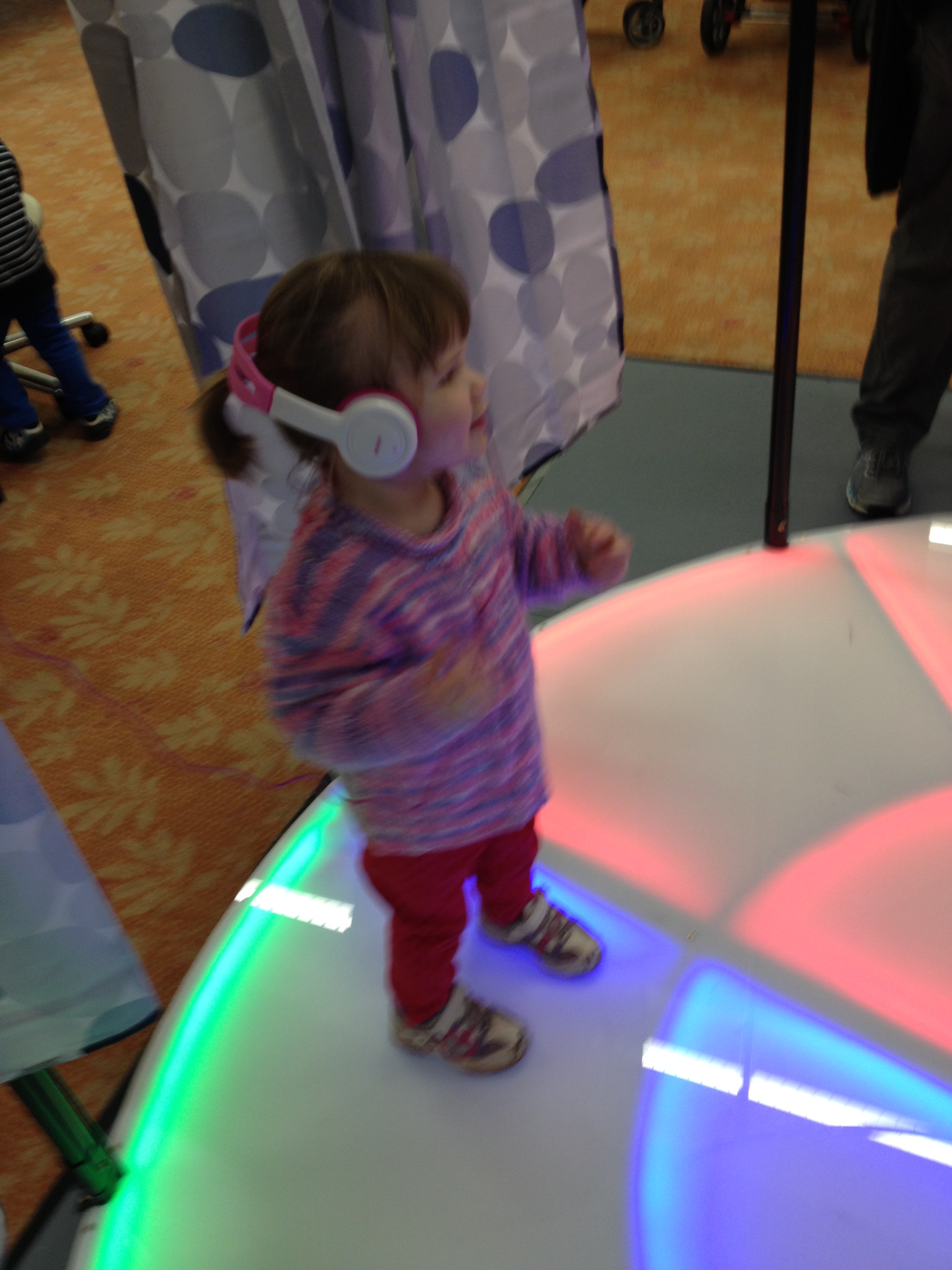
Penny walked tentatively across the floor, ignoring the headphones and the flashing lights and walked straight into the curtains where she played peek-a-boo, hiding in them and running through them for a long period of time. I sat nearby and watched them go. Whilst I did so I watched several other excited children enter the space with their parents in toe. They directed their toddlers to the headphones and popped them on their heads before standing with them and imitating their children’s bopping motion as many of them do.
I have absolutely no problem with this and in fact, pre RIE I was exactly the same, always wanting to show my kids what they are supposed to be doing. As it went on though, I sat there watching as Penny played happily in the curtains, exploring and discovering whilst several family groups came and went. I detected a pattern of behaviour whereby, those children that had been directed to do as the display intended, lasted in the area for less than a minute whilst those who were left to discover for themselves, played for a much longer time.
One particular incident had me feeling quite sorry not just for the child but for the parent too. This little boy, slightly older than Penny but less than two (I’m guessing) entered the dance floor with his parents and saw Penny hiding in the folds of the curtain. Ignoring the lights and headphones (much like Penny) this boy headed straight to another set of hanging curtains that encircled the floor but just before he got his little hand on one, his Dad grabbed his arm and redirected him back to the headphones, fitting them on his head and then bopping in front of him, showing him how to dance. The toddler, understandably was less than impressed and wriggled out of the headphones, throwing himself to the floor in objection when he was prevented from going into the curtains once again. The child was then helped from the floor by his Mum who then directed him out of the play area and out of the library.
Now, admittedly, I do not know any of the circumstances of this family which could have led to the decisions they made that day but I couldn’t help but wonder whether their need to provide their son with as many of life’s experiences as possible had made them overlook their child’s basic desire to explore and investigate in his own way, developing his own chosen experiences along the way.
Once Penny had left the dance area to delve deeper into the other delights on offer, I watched in fascination as she carefully considered her options. I repositioned myself so I was central to both her and Lucy and enjoyed several moments watching both girls move from object to object, gathering in information from each before they would eventually settle on the one that would resonate with them the most.
From my position I had a great vantage point for viewing the washboard table drum designed so children would run a drumstick along the board and tap the hanging metal plates like cymbals. The effect was lovely but as I sat I was amazed that not just some but all children who chose to climb onto the stool and partake in a little noise making were shown what to do by their parents. I’m not talking just little toddlers either; there were children there that would have had to be 5 or 6 who were not trusted to explore and play independently. Parents all over could not resist showing the children how to run the drumstick over the corrugated surface to make a sound. I pondered whether they might have discovered how to use it for themselves if given a little time. Interesting to note here was that the average lasting time at this particular display was less than 30 seconds.
After a little bit, Penny approached the this table and put her hands on the stool trying once to pull herself up before realising it was a little too high for her. So instead, she reached up and grabbed the drumstick. She then started hitting it on the stool, making little tapping noises. She then noticed that there was a little decorative hole cut out of the middle of the seat of the stool. She put her fingers of her free hand into it before peering in to have a look where it led. She then poked the drumstick into the hole carefully until it was almost all the way in and then removed it. She repeated this experiment about a dozen times before accidently (it seemed) dropping the drumstick into the hole. She peeked anxiously in after it and spotted it down on the floor. This started a whole new period of discovery for her whereby she would drop the stick in the hole then bend down and retrieve it before repeating over and over.
Her intense concentration was only broken by another child who came over to join in the game, peering into the hole after Penny had dropped the stick through. The girl’s mother was close behind and was careful not to let her daughter take the stick from Penny. Penny was finished though and happily offered up the stick to the girl who tried to poke the stick in the hole like Penny was doing but was promptly picked up and sat on the stool by her Mum and shown how to run the drumstick up and down the wash board.
If I could have sent a subliminal message to all those parents that day it would have been to do some research into RIE. Whilst I know that there are many many lovely parents and styles of parenting which are far removed from RIE and which still produce beautiful children, I know that the joy and satisfaction I experience in allowing my children to play at their own level and to have ownership over their play has got to be greater than having to constantly redirect children to play ‘properly’.
Another experience happened here at home, just the other day. It was a cold and rainy day, one not really conducive to letting the kids run around outside. I decided to set up some sticky collage play for Lucy whilst Penny slept. Whilst she was ‘cooking’ in her ‘kitchen’ I discretely stuck some contact paper upside down on her art table. I added some containers of collage material including cut up paper, material, buttons, confetti stars and puff balls and left it all there for her to discover. I had seen this activity set up on an internet site and thought it would be a great one for Lucy who has a short fuse and can get quite frustrated when trying to use glue with loose parts for normal collage work. I had certain expectations (based on the site) and thought this might be an activity that would keep her engaged for a significant amount of time. (Just as a side note, Lucy is not really renowned for her attention skills, I believe, as a result of being ‘entertained’ a lot through her first 18 months of life, prior to my discovery of RIE.) So this is how things unfolded.
Lucy discovered the invitation to play.
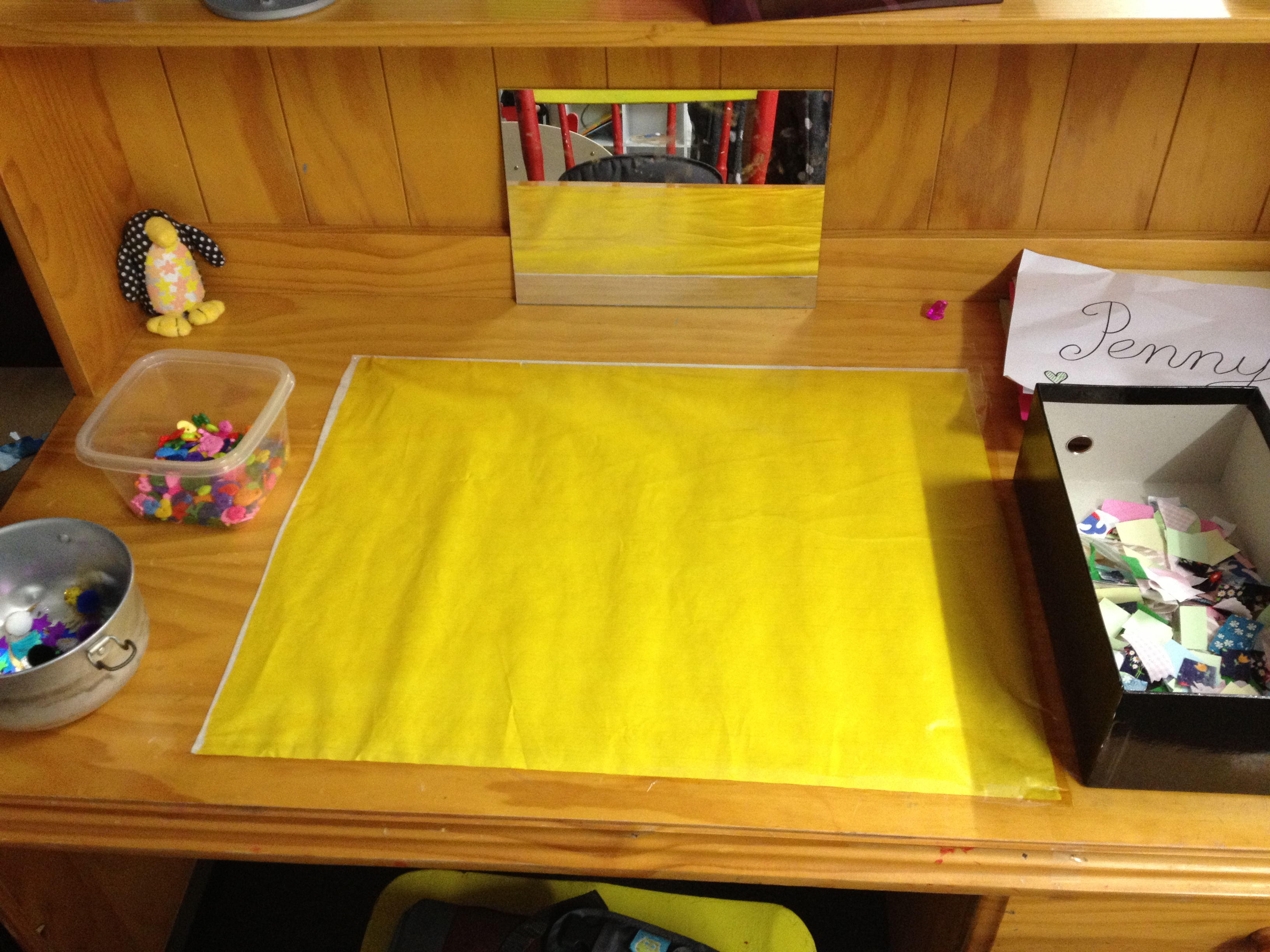 She slowly investigated the confetti stars discovering that they stuck nicely to the contact.
She slowly investigated the confetti stars discovering that they stuck nicely to the contact.
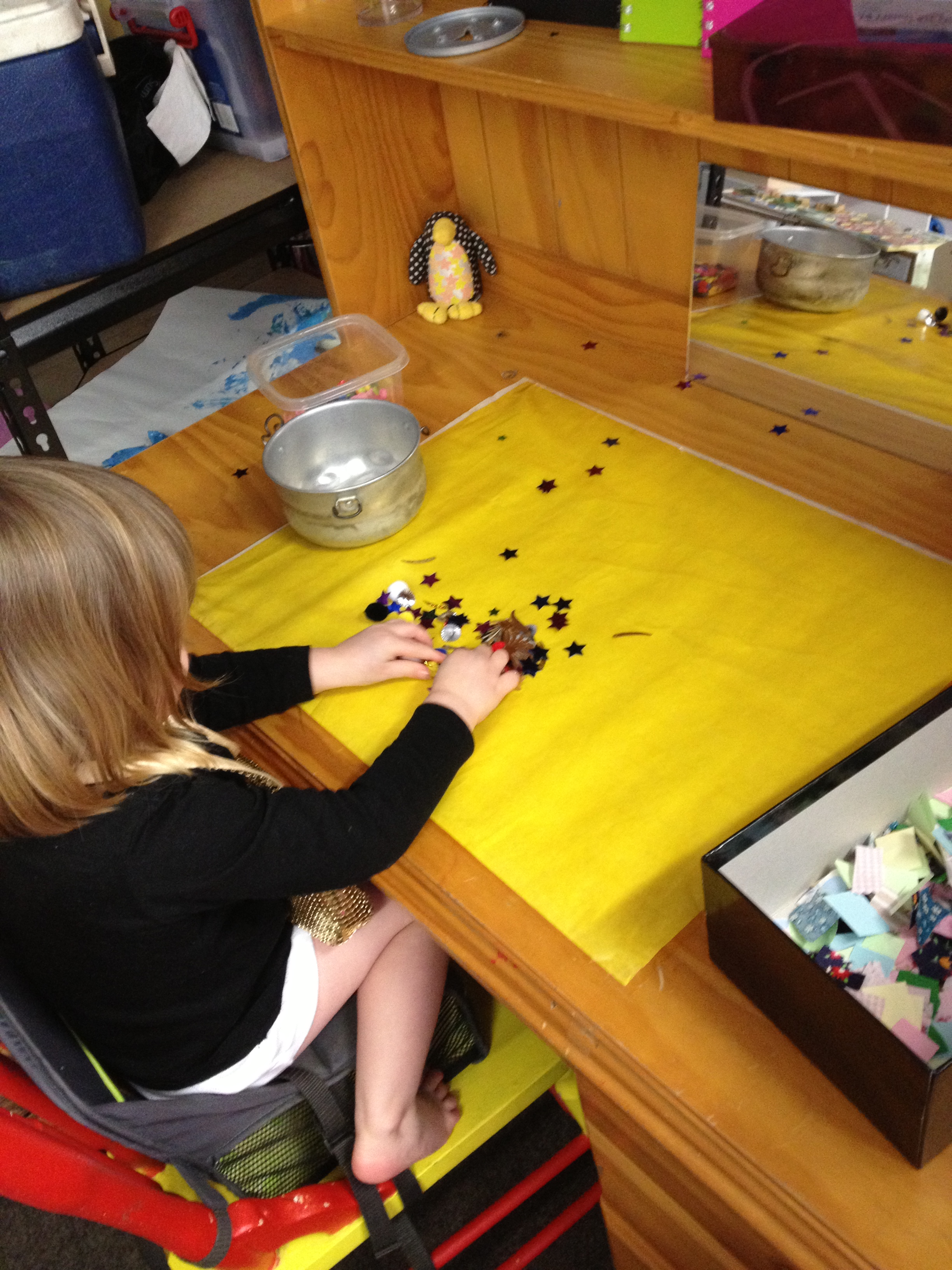 She then upended each of the containers one at a time onto the contact making a big pile in one spot.
She then upended each of the containers one at a time onto the contact making a big pile in one spot.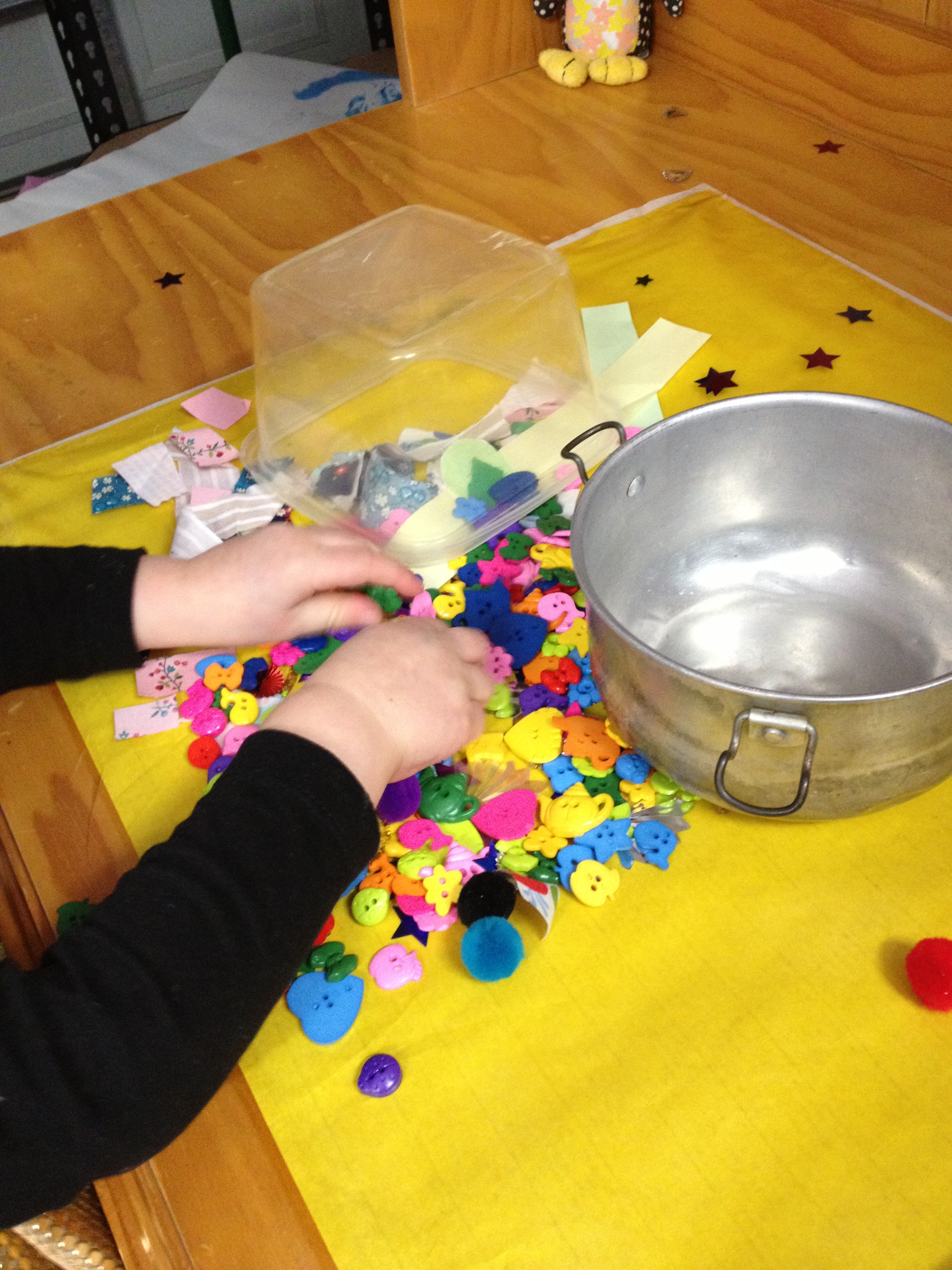
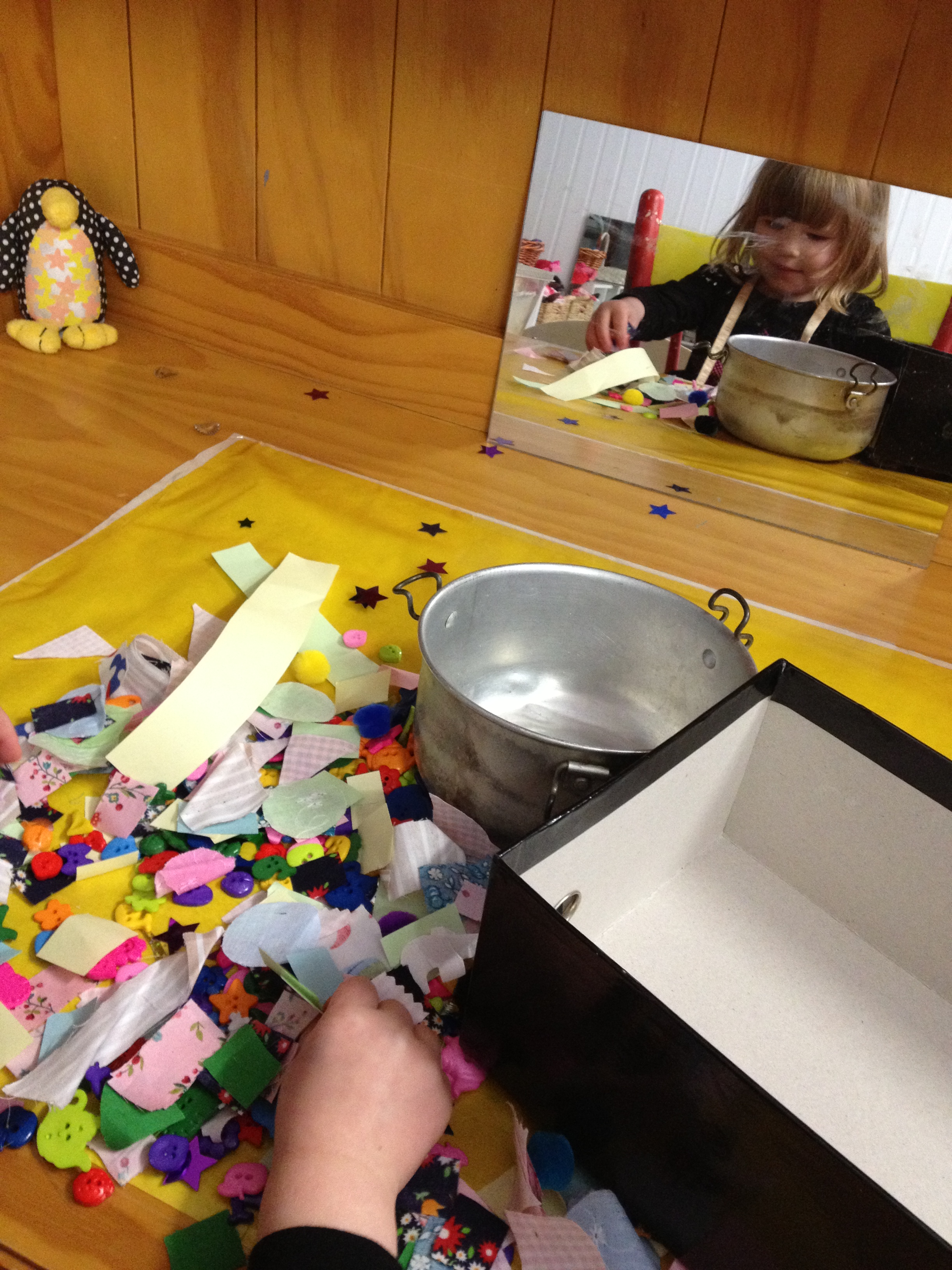 She then discovered that this pile was not all stuck to the contact so she grabbed handfuls of the loose parts from the pile and dropped them over the edge of the table, watching them as they floated to the floor.
She then discovered that this pile was not all stuck to the contact so she grabbed handfuls of the loose parts from the pile and dropped them over the edge of the table, watching them as they floated to the floor.
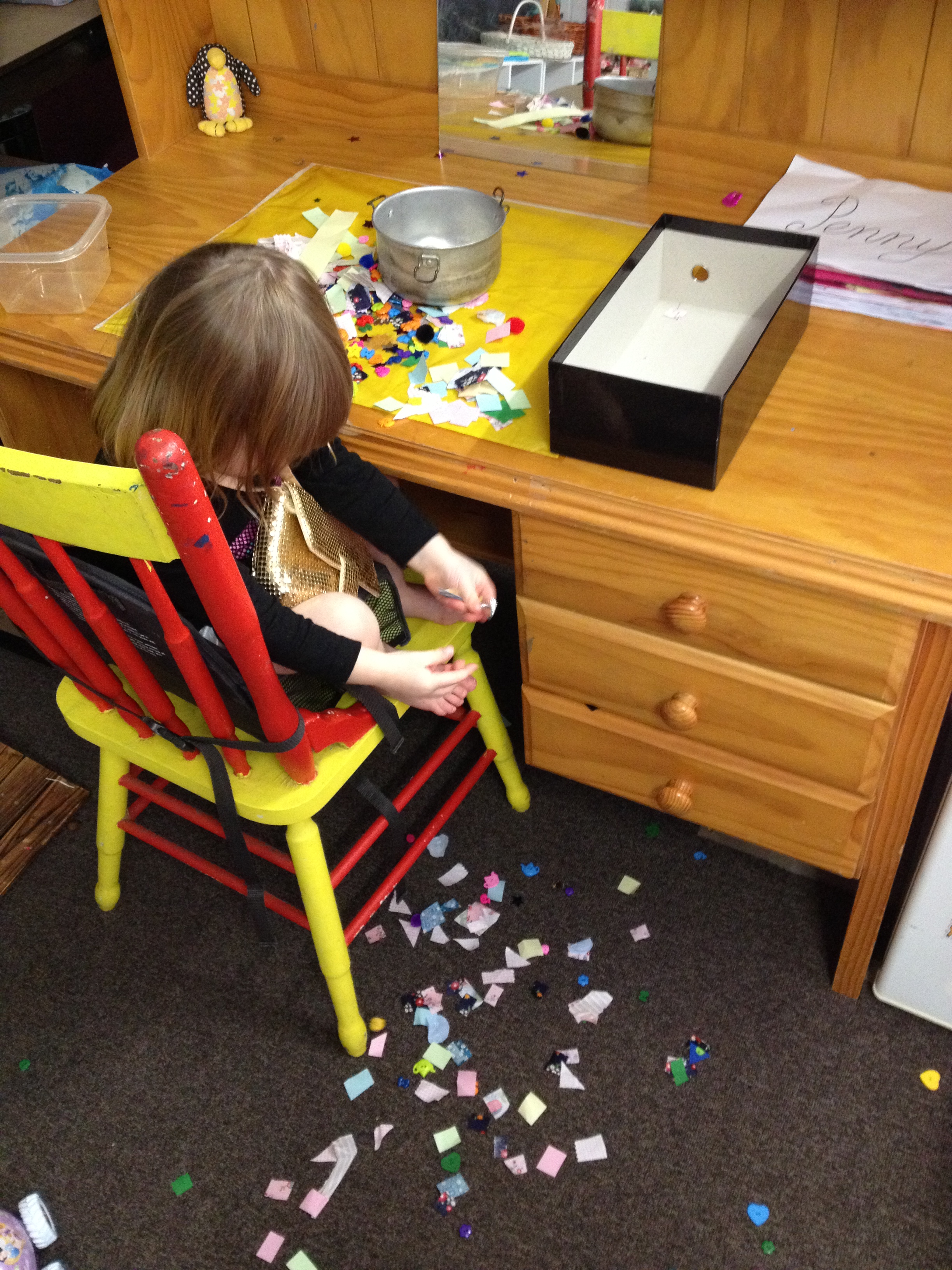 It took all my strength not to leap in and stop her doing this; to redirect her back to the task I had so carefully prepared for her. But to her, at her age and stage, this was play, this was experimentation, discovery and fun all in one. It didn’t look how I expected it to but she didn’t know that, I hadn’t told her and she was very happy and proud of her achievement.
It took all my strength not to leap in and stop her doing this; to redirect her back to the task I had so carefully prepared for her. But to her, at her age and stage, this was play, this was experimentation, discovery and fun all in one. It didn’t look how I expected it to but she didn’t know that, I hadn’t told her and she was very happy and proud of her achievement.
I believe the RIE road is such a rewarding one and I love to reflect on experiences such as this and feel that overwhelming sense of gratefulness that I am able to now enjoy such moments in parenting rather than stress that my children are not on the right track or experiencing the right things. I would love to hear some other stories like this from parents who have experienced the same thing. Feel free to post in the comments below.


